Aberdeen Packing Company 1896/ Doupé Brothers Hardware
Introduction
Text-to-speech Audio
The building was built by Aksel Seaborg as the Aberdeen Packing Company. In 1903, the building was purchased by C.E. Kerlee and R.A. Hawkins. It was sold again and later became Doupé Brothers Hardware in 1919. To view a video with more info, click the link below in Additional Information.
Images
Turntable in Ilwaco c.1890
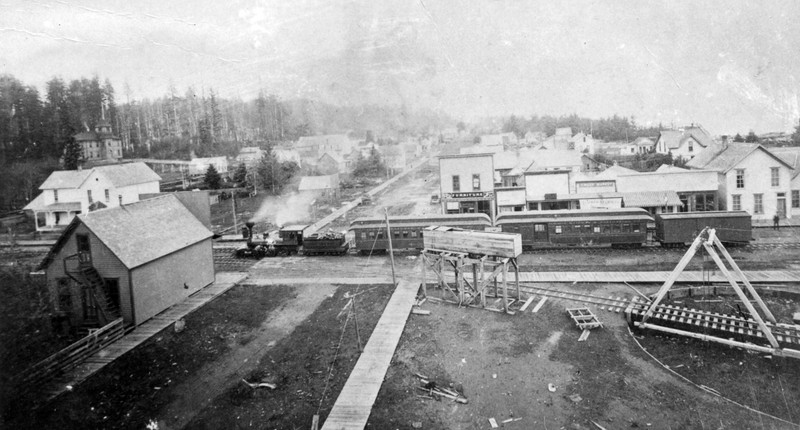
Doupe Brother's Store, Ilwaco.
.jpg)
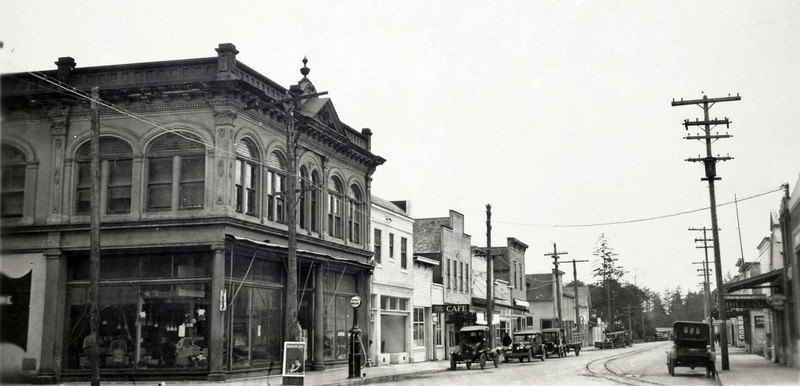
Doupe Building and Ilwaco Railroad tracks on 1st St.
-001.jpg)
Dry goods department at Doupe Brothers Store
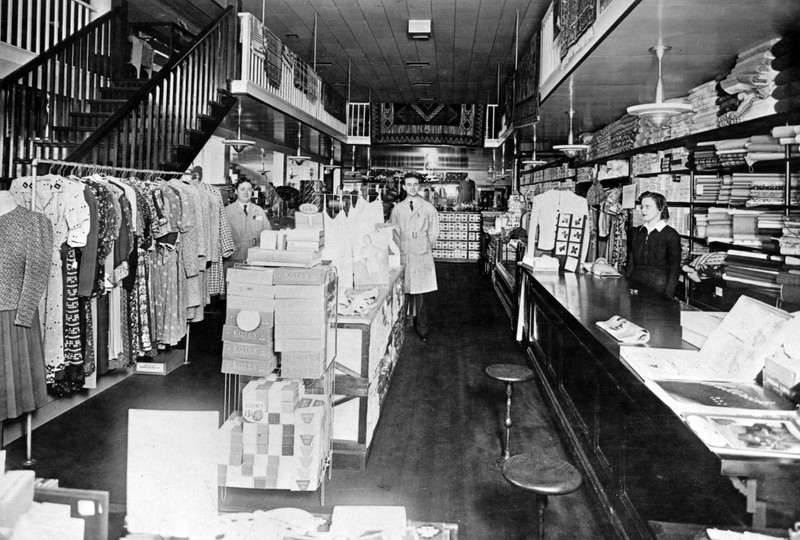
Hardware Department at Doupe Store.
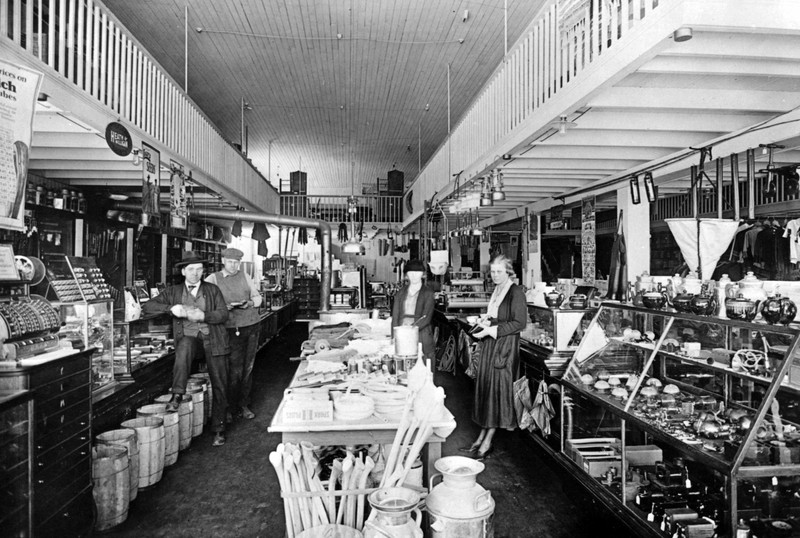
Golden wedding anniversary for Margaret and Joseph Doupe.
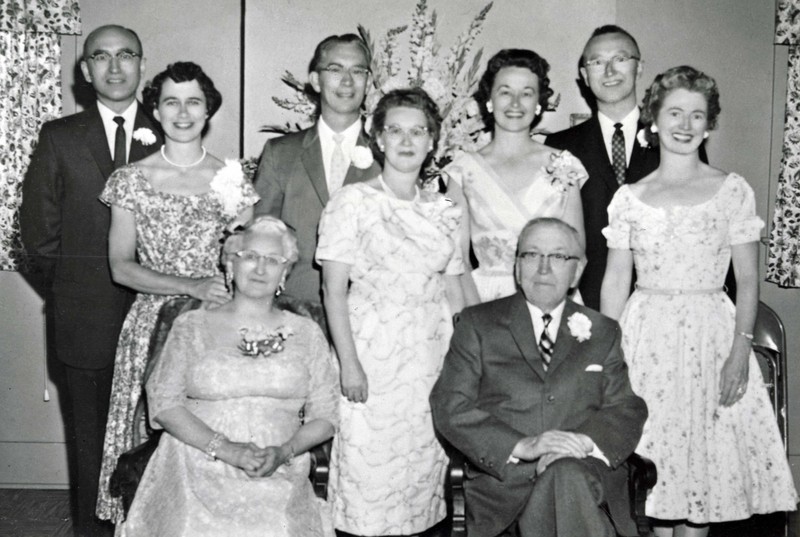
Backstory and Context
Text-to-speech Audio
Dan Markham Houses
The Aberdeen Packing Company building, popularly known today as the Doupé building, has been an imposing presence in Ilwaco for many years. For so many years, many people did not know that it was not the first structure that stood on that lot. That story begins with Dan Markham.
The Dan Markham family arrived in Ilwaco in 1879, having traveled west from Kansas in a covered wagon. Dan Markham built the first hotel in Ilwaco, the Kansas House, which later became the Central Hotel. Markham also worked as a fish trap foreman for well-known Ilwaco businessman B.A. Seaborg. After a couple of years in the hotel business, Mr. Markham decided that he would rather devote his time to fishing. On August 25, 1886, he bought the lot at First Ave. and Spruce Streets for $400 from Rachel Holman. In 1889 or ’90, the Markhams built a house on the property that has been described as “quite grand” with several fireplaces. On the night before the family was to move into the new house, it was destroyed by a fire.
Undaunted, in 1894 the Markhams built a second, more modest home on the lot. At some point in time, the second home was moved on skids just a bit more east on Spruce. Seaborg took possession of the corner lot and constructed a great brick building, operating it as the Aberdeen Mercantile. This is the building we see today at the corner of First Ave. and Spruce Street. During the infamous Columbus Day windstorm of 1962, the second Markham house was blown off of its foundation. The house was beyond saving and in the end, was demolished.
The view from the turntable is East facing, c1890. On the left side of this photo, on the far side of the tracks, is the first Markham house, where the Doupé building now stands. Note the second school building on the hill behind it. That is Spruce Street. The train is on First St. crossing Lake St. The Kansas House was the first hotel in Ilwaco, was built by Dan Markham, and is the building on the right of this photo on the far side of the tracks. The large house visible behind the Kansas House is the Holman home on Main St. It was torn down when the TU extended its buildings and is where the Museum’s Collection building now stands.
Doupé Brothers Store
B.A. Seaborg, the founder of the Aberdeen Packing Company in Ilwaco, built the Seaborg building on the SE corner of 1st and Spruce in Ilwaco. It was constructed sometime before the turn of the 20th century and operated as the Aberdeen Store. In 1903, he sold the business to C.E. Kerlee and R.A. Hawkins. In 1905, Joe Doupé, an Irish immigrant, answered an ad in the Portland Oregonian for the position of bookkeeper. In 1909, he married Margaret Rogers, the daughter of Charles Rogers, owner of the Ilwaco Mill & Lumber Co.
In 1910, Joe Doupé and Charles Rogers opened a hardware store on the west side of 1st and Lake St., where the IR&N turntable had formerly been. The Kerlee Store was closed in 1916 and all remaining inventory was sold. The building remained vacant until 1919, when Joe Doupé and his brother Harry bought the building, forming the Doupé Brothers Hardware Store. Joe ran the hardware section, while Harry managed the ready-to-wear and dry goods department.
Joe and Margaret had four children: Florice, Charles, Isabelle, and Marshall. In 1946, the elder Doupé brothers retired, turning the business over to the next generation. Joe Doupé’s sons Charles and Marshall, along with their cousin William operated the store. The business expanded across the street in 1967 with the addition of a furniture store and women’s apparel store, bringing a modern shopping center to Ilwaco.
The bronze cash register at the museum was made by the National Cash Register Company. Made in 1915, it was one of the top models that could be purchased at that time. Notice the large oak cabinet where records, supplies, and receipts could be stored. The Doupé Brothers used this cash register in their store until it closed in 1982.
Hardware Store Cash Register
It is hard to imagine a modern business operating without a cash register. Yet prior to their invention in 1879 by saloonkeeper, James Ritty, nothing of its kind existed. Business owners relied on the pen, paper, or other less accurate methods of tracking commercial transactions, often leaving them to wonder if they actually operated at a profit or loss for the day. Finally, shop owners were presented with an information processing system that tracked individual sales. The machines became so popular, that between 1884 and 1916, more than 1.5 million were sold.
The leading company producing these coveted machines was the National Cash Register Company (NCR). Founded by John Patterson, a general store owner from Ohio, NCR was the first and dominating manufacturer of cash registers. Between 1888 and 1915 NCR was responsible for 95% of the cast-bronze encased registers that dominated the market and lead to the classification of that period as the “Brass Era.”
The Columbia Pacific Heritage Museum is home to one of the stateliest of these devices and it helps tell the story of Ilwaco’s heyday. Standing at 5 feet 5 inches tall and weighing approximately 300 pounds, this series 500 cash register is a floor model, with an attached eight-drawer oak cabinet, ornate bronze work, and a marble sill. It served most of its active life at the center of Ilwaco commerce, the Doupe Brothers Hardware Store. You can see it in this photograph on the left.
Looking at an early 20th-century photograph, it is easy to imagine Ilwaco as it once was, a bustling fishing and timber community made prosperous by its active tourism and commercial trades. The Doupe Brothers Hardware Store was ideally located at the main intersection of town and it thrived. Its founders Joe and Harry Doupe became so prosperous over the years that they expanded several times to keep up with the growing community, creating the 1st modern department store in Ilwaco. A prosperous business deserves the best amenities, including this imposing cash register. The bustling business is gone now, the railroad disbanded and the tracks pulled up, and the steamers no longer bring boatloads of tourists into town. The Doupe Brother Hardware store, like so many other businesses, shut down, but the register still stands in the Museum as a significant reminder of those historically prosperous times and the importance of Ilwaco as the historic center of commerce for South Pacific County.
Sources
CPHM Photo Collection – Doupe Hardware Department, L-R: Joe Doupe, Semri Keiski, unknown,
Helga Keiski
CPHM Photo Archive - 1999.090.300
CPHM Photo Archive - 1990.115-171.463.84
CPHM Photo Archive - No-ACCT#-3490-9-B
CPHM Photo Archive - 2001.12.736
CPHM Photo Archive - 2001.12.733
CPHM Photo Archive - 2001.012.732
